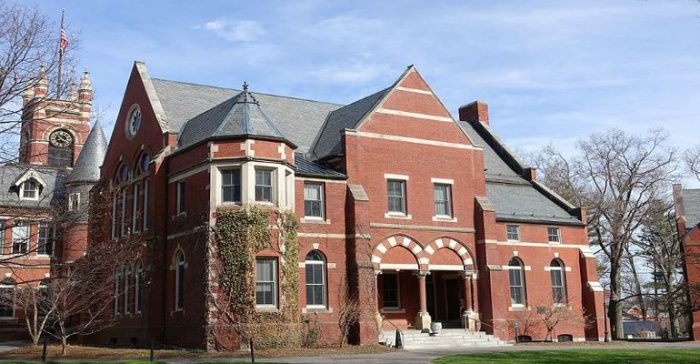This article was originally written by Taylor Patterson on Nov. 1, 2019.
Smith College has dedicated the 2019–2020 school year to bringing awareness, understanding, and action to the global climate crisis through its Year on Climate Change. Smith, a women’s liberal arts college in western Massachusetts, has established a “Study Group on Climate Change” in 2015. The initiative has involvement from the student body, faculty, staff, and members from the board of trustees. This dedicated group of individuals worked relentlessly to identify ways the institution could do more to prioritize climate issues and develop a plan of action to get the school and community more involved in taking steps toward a more sustainable lifestyle.
Smith was more than willing to implement a year-long initiative to highlight what changes could be made – from individual members of the school community up to the institutional level – to effectively combat climate change. The Study Group on Climate Change developed five recommendations to encompass year-long initiatives and to focus school efforts. The group divided each of the five broad recommendations into sub-recommendations, which included action items and execution plans to evoke the desired change. Below are the five recommendations along with a high-level synopsis of how each one is being implemented into the operations of the college:
- Academic – creating new
offerings and integrating climate change concepts and topics into existing
curriculum as applied learning opportunities
- Campus programming – expand opportunities to learn about/get involved with climate change outside of the classroom
- Campus operations – pursue net-zero GHG by 2030 and 40% reduction over next 5 years
- Investments – utilize endowments to prioritize and combat climate challenges
- Institutional change – develop sustainability and climate change initiatives to affect institutional behavior/actions
Some monumental steps are already being seen at the school under these recommendations, especially at the institutional level. Smith set ambitious goals to completely eliminate GHG emissions from the college buildings by the year 2030, with 40% of that reduction happening in the first five years of the plan’s implementation. To aid in this effort, the school conducted a campus energy decarbonization study in 2017. The final report highlighted short- and long-term strategies to achieve their net-zero goal for 2030 and established a timeline for task completion, execution methodologies, and even recommendations for future steps that can be taken to further delve into sustainable operational practices. Investing in such valuable knowledge and assessments emphasizes just how serious Smith is about executing their Year on Climate Change initiatives and holding themselves accountable.
With all five recommendations, Smith College hopes to utilize applied learning and real-world examination of sustainable ideals and practices to encourage a shift in attention toward preexisting, everyday engagements and activities to focus on climate issues – highlighting the fact that there are little things that everyone can adjust in their daily lives to lessen the negative impact humans impose on the earth.
The Year on Climate Change has set the stage for Smith College to make vast strides toward operating in a more sustainable manner, while simultaneously providing students the opportunity to recognize their responsibility in the global climate crisis and apply the knowledge and skills they have learned to address real world issues. Not only does the college hope to achieve the goals it has set forth for the campus and for developing young, active women leaders in the process, but Smith also hopes to inspire and encourage other institutions to reflect on how they can contribute to the fight against climate change and do their part to create a healthier, smarter, more sustainable community.
